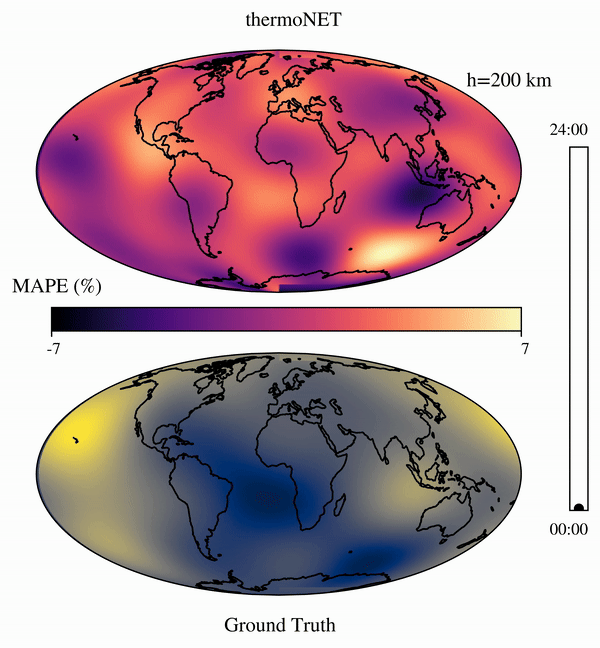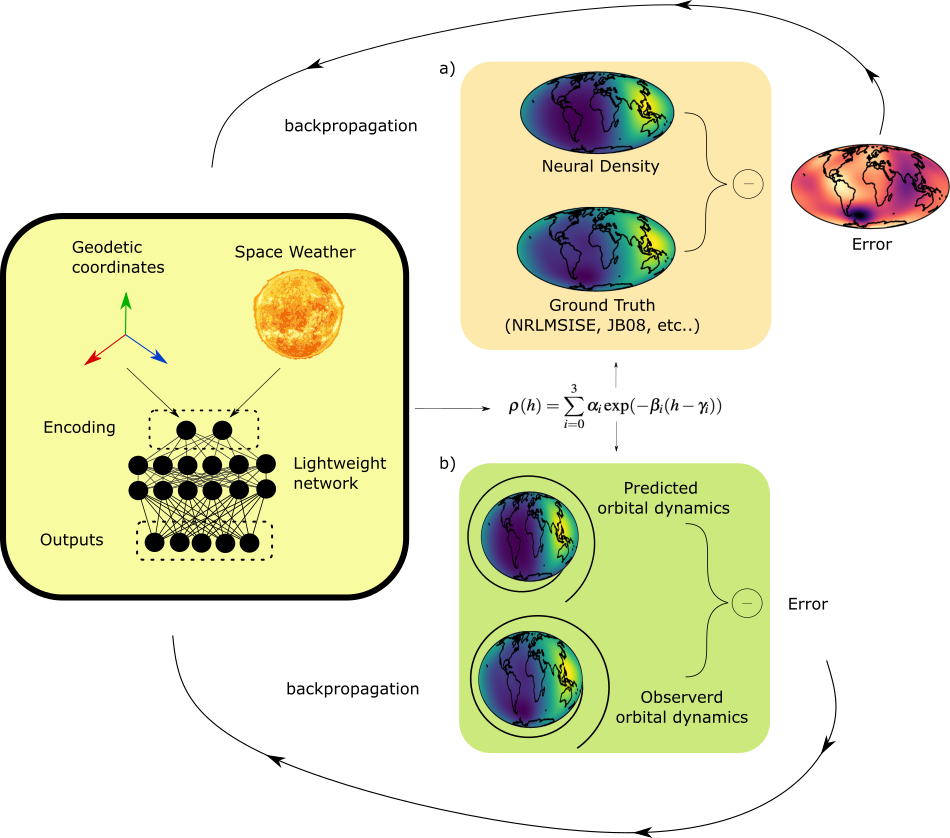Improving VLEO Re-Entry Simulations
Background

The analysis of satellite trajectories, particularly when influenced by the upper atmosphere, is affected by critical uncertainties. While precise models of our thermosphere such as the widely used NRLMSIS from the United States Naval Research Laboratory [1], have become standard in orbital simulations, their significant discrepancies underline the challenge of accurately estimating drag effects.
Inherent uncertainties in established thermosphere models are thus significant, suggesting that artificial neural modelling may be particularly appropriate in this context. It is thus not surprising that the idea of using an artificial neural network to represent the density in the thermosphere has been introduced and studied in the recent past in several different works [2,3,4], producing a plethora of neural models able to directly predict the density in the thermosphere or to correct existing models.
Project goals

We introduce a novel neural architecture termed thermoNET, designed to represent thermospheric density in satellite orbital propagation using a reduced amount of differentiable computations [5].
Due to the appearance of a neural network on the right-hand side of the equations of motion, the resulting satellite dynamics is governed by a NeuralODE, a neural Ordinary Differential Equation, characterized by its fully differentiable nature, allowing the derivation of variational equations (hence of the state transition matrix) and facilitating its use in connection to advanced numerical techniques such as Taylor-based numerical propagation and differential algebraic techniques. Efficient training of the network parameters occurs through two distinct approaches.
In the first approach, the network undergoes training independently of spacecraft dynamics, engaging in a pure regression task against various ground truth models, including JB-08 and NRLMSISE-00. In the second paradigm, network parameters are learned based on observed dynamics, adapting through ODE sensitivities. In both cases, the outcome is a flexible, compact model of the thermosphere density greatly enhancing numerical propagation efficiency while maintaining accuracy in the orbital predictions.
We open-source the code to train, analyze and use thermoNETs for downstream tasks (such as orbit propagation, and neural ODE training).
References
[1] Picone, J. M., A. E. Hedin, D. Pj Drob, and A. C. Aikin. "NRLMSISE‐00 empirical model of the atmosphere: Statistical comparisons and scientific issues." Journal of Geophysical Research: Space Physics 107, no. A12 (2002): SIA-15.
[2] Pérez, David, and Riccardo Bevilacqua. "Neural Network based calibration of atmospheric density models." Acta Astronautica 110 (2015): 58-76.
[3] Licata, Richard J., Piyush M. Mehta, Daniel R. Weimer, and W. Kent Tobiska. "Improved neutral density predictions through machine learning enabled exospheric temperature model." Space Weather 19, no. 12 (2021): e2021SW002918.
[4] Acciarini, Giacomo, Edward Brown, Tom Berger, Madhulika Guhathakurta, James Parr, Christopher Bridges, and Atılım Güneş Baydin. "Improving Thermospheric Density Predictions in Low‐Earth Orbit With Machine Learning." Space weather 22, no. 2 (2024): e2023SW003652.
[5] Izzo Dario, Giacomo Acciarini, Francesco Biscani. "NeuralODEs for VLEO simulations: Introducing thermoNET for Thermosphere Modeling". In 29th International Symposium on Space Flight Dynamics (2024).